Opinion
Ivermectin for COVID-19 management

Prof Saroj Jayasinghe’s candid view, published in The Island of September 17, 2021, on Ivermectin use, both in treatment and prevention of COVID-19, has been based on scientific analysis of multiple meta-analyses on the subject. Therefore, his educated opinion must be viewed with great positivity.
Quite correctly, a doctor has to make decisions in good faith in an emergency situation, where any delay in the commencement of treatment could be disastrous. In a life-threatening condition, the treating doctor has no time to wait and waste until the evidence is available scientifically. Instead, the doctor has to make a decision using his clinical acumen and experience in order to save the life of the patient under his or her care.
Another example is: In an instance where an unconscious patient is brought to the accident and emergency department with life-threatening bleeding after an accident, the treating surgeon has no time to obtain the patient’s informed consent (usually a requirement before any surgical procedure), but to attend to (perform surgery on) the patient in all-good faith, in order to save the life. It may require even the amputation of a leg or hand.
Hence, treating a critically ill patient with Ivermectin is more than justified, particularly in the backdrop of the World Health Organization (WHO) declaring COVID-19 as a public health emergency. Further, under this context, the usage of Ivermectin in the prevention of COVID-19 is quite justified. Since no antiviral drug is available hitherto, its usage is further warranted.
As mentioned, Ivermectin is a time-tested and safe drug with no known serious side effects. The call for its usage in the management of and prevention of COVID-19 is time appropriate.
A veterinary surgeon, Prof Asoka Dangolle of the University of Peradeniya, has also expressed his opinion based on his experience with Ivermectin in mammals. In the current context, the world’s attitude is much in favour of the ‘One Health’ concept.
Therefore, in a helpless situation or pandemic of this nature, the consideration of the use of Ivermectin in all good faith is justifiable.
Prof ANANDA JAYASINGHE
Professor in Community Medicine
University of Peradeniya.
Opinion
125th Birth Anniversary of Senator A Ratnayaka – a humble politician with a Vision for Education
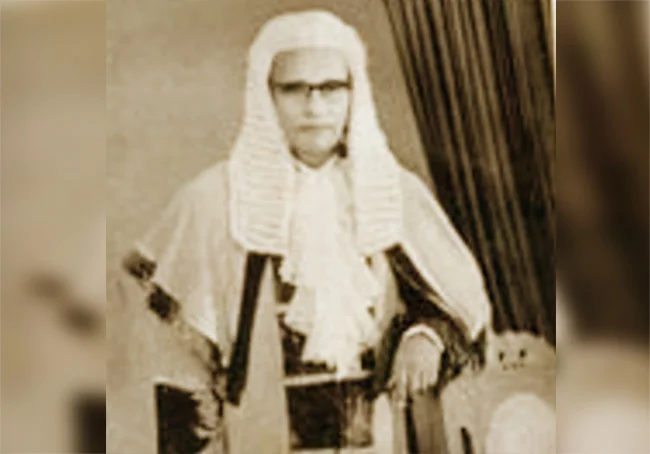
07 January 2025 is the 125th birth anniversary of Senator A Ratnayake, State Counsellor, Member of Parliament and the last President of the Senate.
Ratnayake Wasala Mudiyanselage Abeyratne Ratnayaka, widely known as A Ratnayake was born the eldest of 13 siblings to Punchi Banda Ratnayake and Dingiri Amma Ratnayake. His father was a stalwart of the Kandy Temperence Movement. Ratnayake was first educated at Dharmaraja College, Kandy and later at Royal College, Colombo. He entered Ceylon University College, now University of Colombo and obtained the Bachelor of Art (London) degree.
Mr. Ratnayake first became a teacher at Ananda College, Colombo. In1924, he was appointed Principle of Maha Bodhi College by late Anagarika Dharmapla, his mentor and who had a great influence on young Ratnayake. Thereafter he studied Law and qualified as an Advocate in 1931. Mr. Ratnayake married Amawathie Andarawewa Kumarihamy, a daughter of a ‘Rate Mahatmaya’ the Head of an administrative locality called a ‘korale’. They had 7 children.
However, his first love was always politics. Mr. Ratnayake was elected to the first State Council of Ceylon from Dumbara constituency in 1931 when the legislative name and the structure of Ceylon was changed from the Legislative Council of Ceylon to The State Council as recommended by the Donoghmore Report. Under the new legislature, members of the State Council were selected to seven special executive committees, the chairmen of these were the Ministers. Mr. Ratnayake chose to be in the Education Committee. On reflecting why he chose education over others; one wonders whether his observation of the plight of his constituents’ educational opportunities compared to the wealthy and the connected in the South and North of the country played a part. Additionally, his awareness of his own privileged education and a desire a provide a similar education for all must have played a part too.
It is worthwhile recounting in detail the story behind Mr. Ratnayake’s role in the free education described in Sir Ivor Jennings memoir, Road to Peradeniya posthumously published in 2005. Sir Ivor was also a member of the education committee. He had stated that Mr. Ratnayake brought the idea of free education for all to the special committee but could not attend subsequent meetings due to ill health from a road traffic accident. However, as fortune may have it, he attended the very last meeting at which the motion was to be signed. Mr. Ratnayake had asked whether the motion contain free education for all. CWW Kannangara, then Education Minister had said that it provided free education up to the age of 14 and thereafter the brightest 25% would be offered scholarships. On hearing this Mr. A Ratnayake is said to have asked whether in the age of the common man they were prepared to deprive the poor student making education a middle-class monopoly. The passionate wish to change education that is not dependent on one’s birth or creed contrasts with other more powerful and influential politicians of the day who were said to have opposed his motion. Mr. Ratnayake’s insistence and strong persuasive powers won the day as the report was rewritten with amendments necessary to provide free education for all. In 1944 the revised motion amounting to a vast increase in the education budget was presented to the State Council by CWW Kannangara.
In 2009, late Professor Carol Fonseka in his CWW Kannangara Memorial Lecture brought these facts to the fore. He asserted that free education would not have been conceived at all if not for A Ratnayake, but it would be stillborn if CWW Kannangara had not put the energy and the enthusiasm to make it into reality.
We now know that child development is variable and very individual and those who do not show early potential can be late developers and achieve great heights that would not have been possible if the opportunities were not provided. Mr. Ratnayake’s vision for education undoubtedly helped this potentially neglected group who would have lost the opportunity if the initial plan of scholarships to the brightest at 14 was implemented.
Mr. Ratnayake played a significant role in other areas of development too. In1948, he became the First Minister of Food and Cooperatives in the post independent Cabinet of Prime Minister D S Senanayake. Mr. Ratnayake initiated the Cooperative Movement in Ceylon, a worldwide organization that began in Great Britain which he advocated to be managed by the people. He inaugurated the Cooperative Federal Bank, which later became Peoples Bank, providing credit to rural folk who otherwise had to depend on money lenders.
In 1952, under Prime Minister Sir John Kotalawela as the Minister of Home Affairs Mr. Ratnayake proposed to the government to commemorate 2,500 years of Buddha Parinibbana a promise he had made to his mentor, the late Anagarika Dharmapala when the two resided at the same accommodation whilst Mr. Ratnayake attended school at Royal College. The translation of the Tripitaka to Sinhala, an encyclopedia on Buddhism in English and the restoration of the Dalada Maligawa were all carried out during his tenure as the Minister of Home Affairs.
It is imperative that the younger generation of today to be made aware of the achievements of Mr. Ratnayake, his determination to provide education for all from kindergarten to university which has benefitted generations of Sri Lankans and continues to do so today. In addition, his contributions to uplift religion, language and culture in the post independent era is worthy of recognition.
When the history of this period is recorded, the name of A Ratnayake will be written in golden letters as a true patriotic son Sri Lanka.
Dr Manouri Senaratne
Opinion
Newspapers more than just headlines

One of my earliest memories is waiting for my grandfather to wake up from his nap in the armchair and passing the time by struggling to read the newspaper that covered his face. As I grew older, being the child of a journalist who chronicled our formative years—albeit thinly veiled with pseudonyms— it was about racing to get the newspaper to see which of us was the target of the week. Sunday mornings meant fighting for the different sections, eager to be the first to open them and breathe in the smell of freshly minted newsprints and leave ink-smudged fingerprints on the nearest sibling.
While it’s easy to lament the changes in journalistic ethics and writing styles—or to get news at lightning speed from various channels—when we seek authenticity, we consistently turn to newspapers. Let’s be real, the unmistakable crinkling sound when flipping through the crisp pages of a newspaper, the scent of fresh ink and the smorgasbord of narratives and images is a sensory experience that no smartphone app can replicate.
Can you imagine starting a workday without at least a quick glance at the headlines and a peek at the editorial section? One moment, I find myself engrossed in the latest political scandal; the next, laughing out loud at a cartoon that perfectly captures the mood of the week. There’s something wonderfully charming about how newspapers weave together unexpected connections between stories, juxtaposing global crises with local bake sales. You never know what hidden treasure you might uncover, a delight that’s lost when reading by clicking on specific articles.
So, the next time you find yourself caught in the binary web of modern media, remember the newspaper — a gateway to the past, present and perhaps even the future.
Romany Parakrama
Daughter of late Sita Jayawardana, Chief Editor of Sri Lanka’s first English language women magazine, the Ceylon Women and veteran actress
Opinion
Solving ethnic issues without PCs
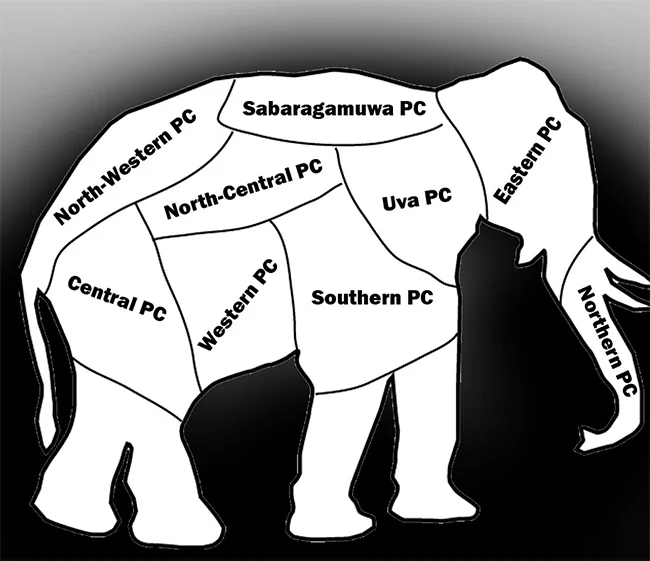
Tamils and also Muslims to a degree in the North, East, Centre and Colombo voted for this government rejecting their own ethnic political parties helping the government secure a two-thirds majority. The significance of this change of heart, as it were, should be understood by the government as well as all political leaders of the country. Maybe they want, apart from solving the problems common to all communities, a different approach to the ethnic problem which had been all these years exploited by their politicians for their own political survival. They may have realised the inadequacy of benefits of Provincial Councils (PCs) where the huge expenditure they entail is concerned.
The PCs do not serve any useful purpose. One cannot see a single project or beneficial outcome accruing from the PC system anywhere in the country. Instead, they have led to another bureaucratic barrier to the people and an increase in the number of politicians. The devolution of power via these PCs is totally redundant as shown by the inability of the Northern PC, which was formed for the very purpose of solving the Tamil problem, to make use of the opportunity to serve the people. The work done by the PCs could easily be carried out by the Government Agents and the Kachcheri system we had previously, without the involvement of politicians.
The total revenue of the PCs in 2020 was Rs. 331 billion and their expenditure was more or less equal. Thus, financially there was no gain for the country. The state coffers would have received that revenue even if there had been no PCs with much less expenditure. The PCs have functioned under Governors without elected representatives for several years.
Further, several authoritative worldwide surveys have shown that power-sharing as a solution to ethnic conflicts has not been effective. About 78 countries in Asia, Africa, West Asia, Eastern Europe, the former USSR and the Caribbean experienced intense ethnic conflicts during 1980 to 2010. Of these, only 20 managed to conclude inter-ethnic power sharing arrangements. Some of them such as Rwanda witnessed genocide Sudan in 2005, and Sudan was divided into two states. Only four to six countries achieved stable arrangements but they are also facing political instability (Horowitz D, 2014).
The following are some excerpts of the research findings; The core reason why power-sharing cannot resolve ethnic conflict is that it is voluntaristic; it requires conscious decisions by elites to cooperate to avoid ethnic strife. Under conditions of hyper-nationalist mobilisation and real security threats, group leaders are unlikely to be receptive to compromise and even if they cannot act without being discredited and replaced by harder-line rivals” (Kaufmann, 1997). Proposals for devolution abound, but more often than not devolution agreements are difficult to reach and once reached soon abort” (Horowitz, 1985).
That Sri Lanka provides ample evidence in support of the above research findings. Of the nine PCs the worst failure was seen in the one in the North, where it was supposed to facilitate the efforts being made to find a solution to the ethnic conflict. Its Chief Minister, after willingly contesting for the post, made use of the opportunity to engage in secessionist propaganda. He did not make use of the government grants for the development of the North.
In consideration of the above, what would be more suitable for Sri Lanka is a power-sharing mechanism. The Tamils who voted for the NPP government may prefer such a system.
The government has a two thirds majority and could bring in the necessary constitutional changes to do away with the presidential system, get rid of the 13th Amendment and establish an institution for power sharing at the centre.
N. A. de S. Amaratunga
-
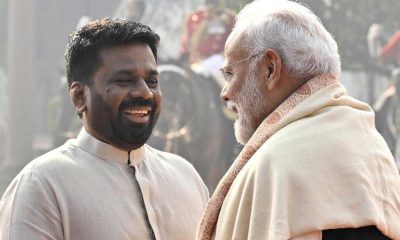
 Features7 days ago
Features7 days agoAKD faces challenging year ahead
-

 Editorial7 days ago
Editorial7 days agoA kiri-kekiri issue
-

 Sports7 days ago
Sports7 days agoSt. Sebastian’s dominate at Bambalapitiya
-
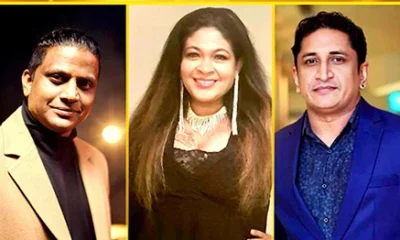
 Features6 days ago
Features6 days agoThey, too, had a ball …Down Under
-
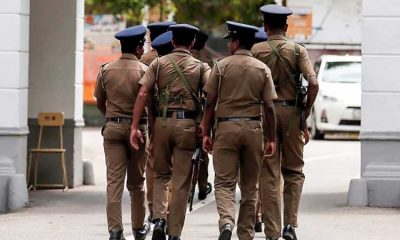
 News4 days ago
News4 days agoReshuffle of senior cops on the cards
-

 Editorial6 days ago
Editorial6 days agoMessages and subtexts
-
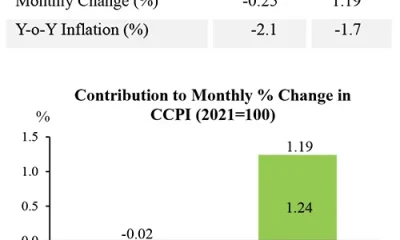
 Business6 days ago
Business6 days agoCCPI-based headline inflation continued to remain in negative territory in December 2024
-

 Editorial5 days ago
Editorial5 days agoBribe-gate and other unsolved plots










